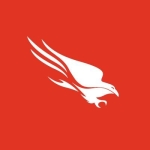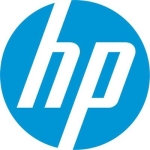What is our primary use case?
We were looking for a security product, which would not only block known viruses, but give more visibility and control over anti-malware. We offer Desktop as a Service (DAAS) for small and medium businesses, so we have hundreds of laptops, desktops, and virtual machines. Because users click on everything, you need to have a solution in place which will detect if something happens and log it, if there's anything malicious, then it will be blocked and reported.
The main reason for going with Cisco AMP is its integration with other Cisco solutions. It can integrate our firewalling, DNS protection, and email security appliance, so if there's a malicious file, and I see it on one of those devices. I can say, "Hey, I want to have this blocked," and it will immediately stop it being emailed in or out our environment. It also can no longer be downloaded from the Internet. Thus, with one click, we have multiple points protected.
AMP is a bit of a time machine for our environment. We can see any action being executed, connection being made, or file being written, whether it's malicious or not. Everything is been logged. I can basically go back in time and see, "This user opened this website," or, "This process created this file." If at any point in time, we do get something where, "There has been malicious activity there," we can completely follow it back:
- How did it get there?
- Did it change other files?
- Did it leave a scheduled task somewhere?
- Did it connect to other machines?
- Did it drop software on another place even before it was know to be malicious?
All activity has been logged. If something turns out to be malicious, or if it's a user doing something they shouldn't be doing without using any malicious software but just using system tools, you can still see every command being run from the console.
The management console is cloud-based and the deployment goes to the endpoints, which are either in our data center or on the laptops and desktops that users have in their offices.
How has it helped my organization?
We worked a lot from home over the past few months. This was our only product that did not need to be changed in configuration when all the laptops did not come into the office for a few weeks. As long as there's an Internet connection, it will get the updates. Anything happening locally will upload to your cloud so you have full mobility on it. You have no need to update your console. You log in one day, and there's a note saying, "We added these new features. Click here for more." It has taken a lot of the hassle out so you don't have to worry about the connectivity or updates. You can just worry about stopping the malware you're investigating and incidents in your environments.
Any alert that we get is an actionable alert. Immediately, there is information that we can just click through, see the point in time, what happened, what caused it, and what automatic actions were taken. We can then choose to take any manual actions, if we want, or start our investigation. We're no longer looking at digging into information or wading through hundreds of incidents. There's a list which says where the status is assigned, e.g., under investigation or investigation finished. That is all in the console. It has taken away a lot of the administration, which we would normally be doing, and integrated it into the console for us.
With Cisco AMP, or any Cisco security products, you get Cisco Threat Response. Threat Response takes the intelligence from all your different solutions, then combines it with sources, like VirusTotal, and includes general information that Cisco has available on those threats. E.g., if I see a file somewhere, I can with one click go from my AMP console to Cisco Threat Response, and there it will be enriched, saying, "We have already seen this piece of software two months ago in Japan. This is what we thought of it. We did an automatic analysis on it. These are the indicators on this piece of software being either malicious or benign." With Threat Response, it is very easy to go from what's happening on my environment to what's happening in the world.
If there's spam coming from a machine, I can with one click determine, "Has there been any other intrusive events originating from this machine? Has it been sending me just spam or has it also been scanning me, making connections to other machines, or login attempts?" With Threat Response, we get the view from all sides, both inside and outside our network.
Orbital helps us with investigation, especially if there's been an incident on one machine, and I want to know, "Are there other machines in my environment with the same type of modifications." It's just a click away. I don't have to leave the Orbital or AMP to do the incident investigation. Thus, I don't have to pivot to another solution to check the event logs or files on the endpoints, and not having to leave the tool is very efficient. You have the same casebook in which you can keep notes of your investigation, then you can share the notes with your colleagues.
The solution simplifies endpoint protection, detection, and response workflows, such as security investigation, threat hunting, and incident response. This positively affects our operational efficiency. We don't have to guess anymore if we have everything or need to use different tools. I can query the machines directly from Orbital. It's a complete tool set. You don't need anything else besides the tools you get with Cisco AMP. There are things now possible which we could not do before, and they're easier than before as well.
What is most valuable?
I find the the integration to be valuable. Cisco Email Security, Threat Response, and firewall are all completely integrated with this solution. It's very easy to connect your firewall or Email Security appliance with AMP to get visibility within Threat Response. On Cisco's end, we have had no trouble integrating. You go to the menu, and say, "I want to integrate this kind of device." Then, it basically shows you which buttons to click to integrate. It has been very easy.
The ability to create groups and policies precisely to your liking is also valuable. You can choose which engines you want to use for specific groups and what type of protection you want for what machines. It's not a single, one-size-fits-all. You can precisely match it to your requirements. E.g., if I have a file server and a laptop, then I want a different type of protection for those machines.
The console is really great. It's web-based. You can give everybody access. It has some great dashboards, which immediately show you what's going on in your environment, what's being blocked, and what needs to be investigated. It also makes collaboration very easy. If I start an investigation, I can open a virtual casebook that will be also stored on the console. I can invite other users to collaborate with me on the same investigation without having to send them notes or have another communication channel open to check things. E.g., I open the casebook and add interesting events to it, then other users are being updated immediately. They can also add to the same casebook, as it is very easy to collaborate from within the console on incident response.
Orbital is a good feature. It's based on SQL query. You can say, "I want to see failed login attempts," to see if there is anything out of the ordinary, then select a random or specific number of endpoints. It can run queries against the machine without you needing to make sessions. You can check if:
- There have been any alterations in the host files.
- Any new applications were installed.
- There have been any events taking place in the event log, without having to leave the AMP environment.
What needs improvement?
We have had some problems with updates not playing nice with our environment. This is important, because if there is a new version, we need to test it thoroughly before it goes into production. We cannot just say, "There's a new version. It's not going to give us any problems." With the complexity of the solution using multiple engines for multiple tasks, it can sometimes cause performance issues on our endpoints. Therefore, we need to test it before we deploy. That takes one to three days before we can be certain that the new version plays nice with our environment.
For how long have I used the solution?
What do I think about the stability of the solution?
The stability is very good. We have had no issues with the console. It has always been available. The connector also runs well.
What do I think about the scalability of the solution?
I have to ensure that the connector is installed on every device, whether it be an iPhone, Android, Linux, or Windows. I don't have to worry about the console, the amount of data, or the back-end, as that is all being handled by the cloud. Therefore, I can scale as much as I want, as long as I have enough licenses.
We currently cover 500 endpoints with Cisco AMP and are looking to scale that up to 3000 this year.
Working on the console: We have seven users.
Working on machines protected by AMP: We have about 5,000 users.
How are customer service and technical support?
There have been a few incidents where we used their technical support, which has been very good. The highest level of certification is Cisco Certified Engineer, and these are the first people whom I talk to as I log an incident with Cisco AMP. They are certified at that level. Therefore, I'm talking to somebody who has intimate knowledge about the products. They react quickly and know what they're talking about. They say, "Can we schedule a remote session? I can work with you on the problem." Then, it's always been either the same day or the next day that they say, "I have a solution," or "I'm going to continue to work with you towards that solution."
Which solution did I use previously and why did I switch?
We previously used Microsoft System Center Endpoint Protection. We switched away from it for two reasons:
- System Center Endpoint Protection is a classic antivirus product, which will block no malware and only work on Windows. There is nothing advanced about it. It does not have login or the cloud console. It will only give you alerts if the machine is connected to the domain. It was a legacy product looking at the malware and the threat landscape. There was no ransomware protection. There was no sandboxing any threats if there was an unknown file. Now, it will be sent over to Cisco Threat Grids and go right on the VM, then there will be a verdict passed saying, "Good file, bad file, suspicious file." Previous solution didn't have that.
- Our company was very happy with the price of Cisco AMP. It was about a third of what we were paying for System Center Endpoint Protection.
We had ransomware before we had Cisco AMP. Basically, the user calls you to say, "Hey, there are some files I cannot access well." You log into the machine and look at the processes, then you see there is a process encrypting all the files. You kill the process, get the files (which have been touched), and then start to restore. However, how can I be certain that the process which was started by the user did not leave a scheduled task saying, "In five hours, we have to start another thing," or did it upload any user data to a different machine? How can I know if was there was data loss involved in this incident?
With our previous solution, you had no way to be sure that you were not missing something, if there were not any files left, passwords/data stolen, connections made to different machines, booby traps or scheduled tasks left, etc. With Cisco AMP, if it manages to execute, I can say, "How did we get this file?" With one click, I can block it from being downloaded from the Internet and being emailed in/out of our environment. I can also see if there were any files created or connections being made. Then, I can be 100 percent sure if there was a data exfiltration, anything left behind, or if we missed anything. AMP is very thorough.
With our previous solution, if it was known malware, we would get an alert. If it was an unknown malware or ransomware, our users were our detectors. Then, it might take hours before they could say, "Hey, something's not working for me." Cisco AMP will get you that same alert within minutes of an incident occurring.
Before we had the Orbital tool and Threat Response, we were just feeling around in the dark if we were doing an investigation. We were never sure, "Did we get everything?" We did positively identify malicious malware, but, "Did we miss anything? Has anything else happened? Is this also happening on different machines?" There were these questions we were not able to get 100 percent satisfying answers on. With Cisco AMP, Threat Response, and Orbital, we are 100 percent certain that we got every trace of malicious software. We're also certain that no other machines have been compromised or will be compromised in the same way.
How was the initial setup?
The initial setup is straightforward. Because the console is cloud-based, you get an email saying, "An account for you has been created. Click here to login." Then, there is the console. There are some basic groups there, and you say, "I want to have these settings." You download an installer, which already has the policy you defined included, and run it. It installs the connector on the endpoint, then the endpoint starts talking with your console. That's all you have to do.
You log into a website, configure your settings, get an executable that you deploy to your endpoints, and that's it. Any policy or connector updates can trigger from the console, because if you can use a web browser, you can deploy Cisco AMP and update it.
I had the first machines deployed within an hour. After, we started a fine-tuning process, which includes policies, exclusions, and rights. Total deployment was probably two or three weeks before it was part of our default image, where every new machine was being imaged with a connector included.
What was our ROI?
Time to response is a lot faster. With every incident, at least six to 10 man-hours are saved because the damage has been reduced significantly. Additionally, if I have to work on file restore for six hours, for those six hours, my IT users cannot work on that application. This does not even take into account lost productivity of hundreds of users waiting to get access to the data again who also have to wait for six to 10 hours.
The visibility has increased a lot because all the heavy work is being done in the cloud. Therefore, we see a lower CPU and memory footprint on the endpoints. All the connectors on the endpoints send your information to the cloud where it is being analyzed, then it just gets the information back. There is not a lot of heavy stuff going on with the endpoint compared with the previous solution where you had a lot of work being done on the endpoint. Thus, you're taking away CPU cycles and memory from the applications you wanted to run there.
Our technicians are doing more meaningful tasks. They can just do their threat hunting and incident response without having to find tools that can do the things already built into AMP and Threat Response.
What's my experience with pricing, setup cost, and licensing?
There are a couple of different consumption models: Pay up front, or if you have an enterprise agreement, you can do a monthly thing. Check your licensing possibilities and see what's best for your organization.
Note: You can upgrade or increase the number licenses by just placing a new order.
Which other solutions did I evaluate?
We did do a product selection, but we did only the proof of value with Cisco AMP. We looked at Trend Micro and a VMware product on paper. However, looking at our integration possibilities, since we were already using Email Security and firewalling from Cisco, there was no other product that offered the same level of integration.
What other advice do I have?
Read the manual. There is a lot of information in there.
Cisco gives threat hunting workshops globally, which are free. They take about half a day and show you how to use this product for threat hunting. Because we're looking at protection and antivirus, we're looking at a reactive response if there is a nasty file to be blocked. With Cisco AMP, you get the possibility to proactively go hunting for threats and find them before they become a problem. With this workshop, it will really shows you the different tools with real life examples, how to effectively test, and make the most of your investment in Cisco.
The solution’s endpoint protection is very comprehensive in terms of the operating systems and devices it protects, e.g., servers, Windows and Linux, smart devices, tablets, or home PCs. As long as it has an Internet connection, I can deploy an endpoint connector. I can get all the input into Microsoft for that endpoint as well. We haven't had any operating systems or devices in which we could not get visibility with AMP.
Other solutions are just the basic, "There was something wrong." They will give you the location, but will not give you the context, from which user, nor show you how the file got onto the system. With Cisco AMP, I just open a dashboard and it will show me (without doing anything), "We had 60 malware incidents via Chrome. We had five malware incidents via Outlook. We had two malware incidents from USB sticks." Immediately, we have an overview of how we're doing today, also showing where the nasty things are coming from. I don't know if there is anything that I'm not seeing.
With Threat Response, there should be some new integrations announced later this month.
I would rate this solution as a 10 (out of 10).
Disclosure: PeerSpot contacted the reviewer to collect the review and to validate authenticity. The reviewer was referred by the vendor, but the review is not subject to editing or approval by the vendor.
















